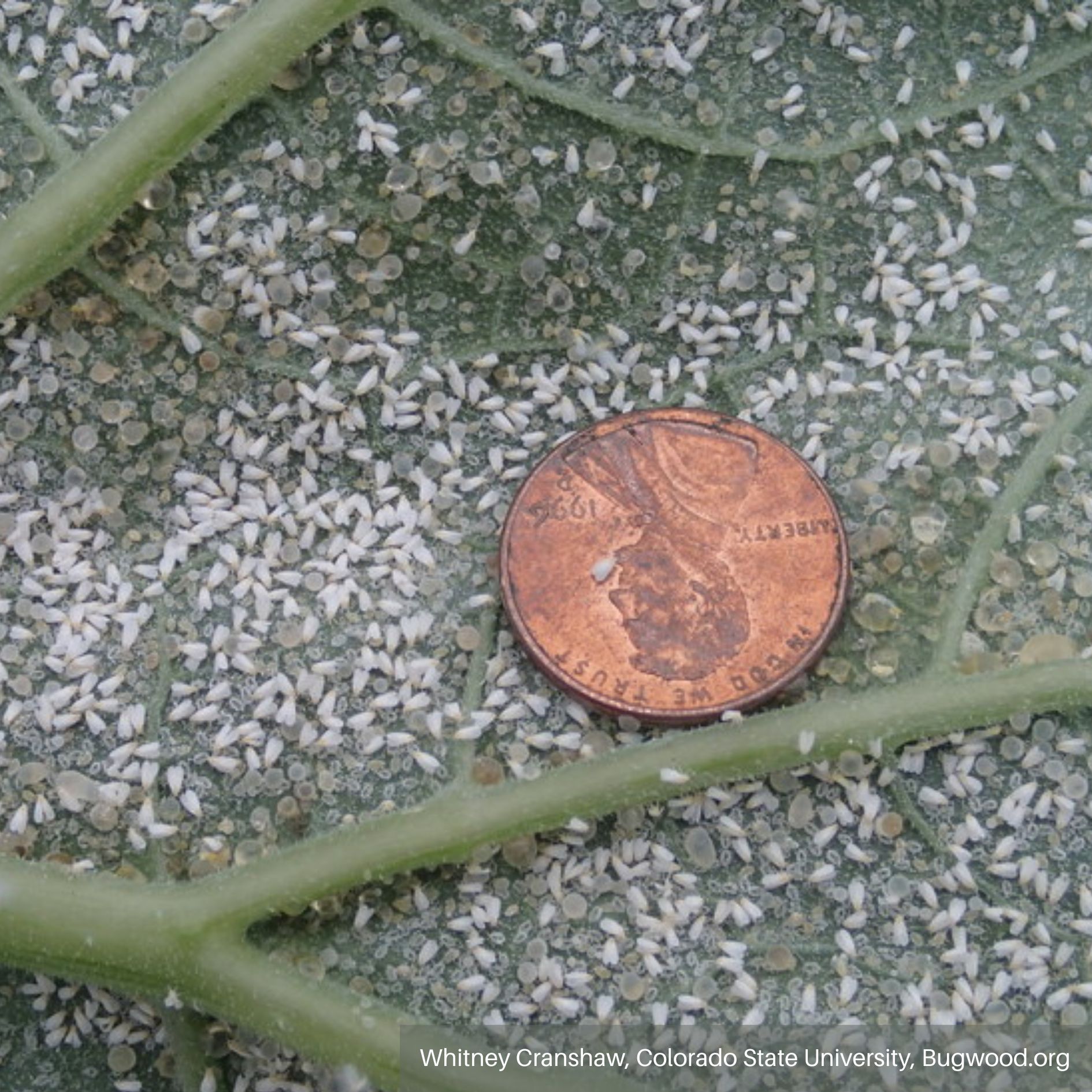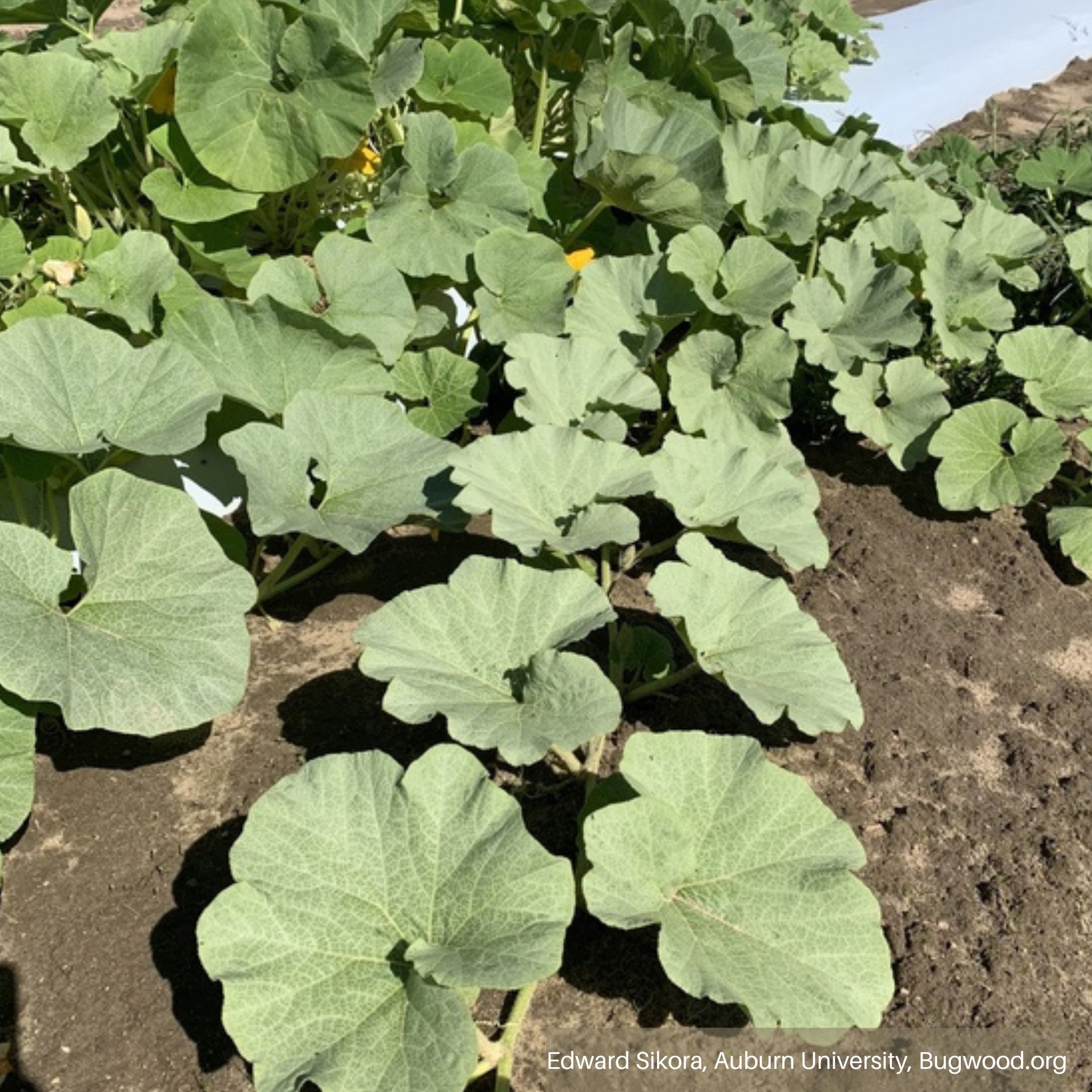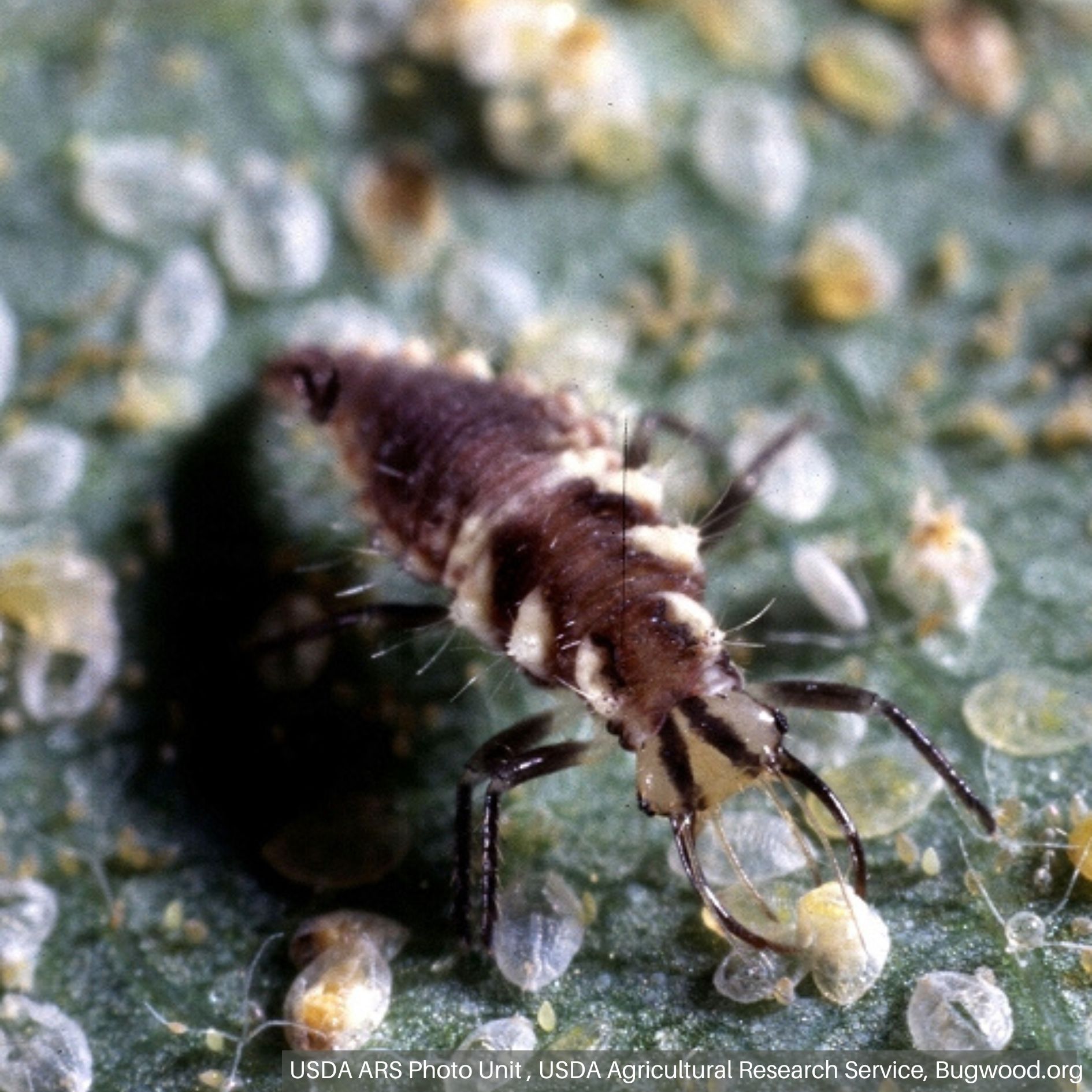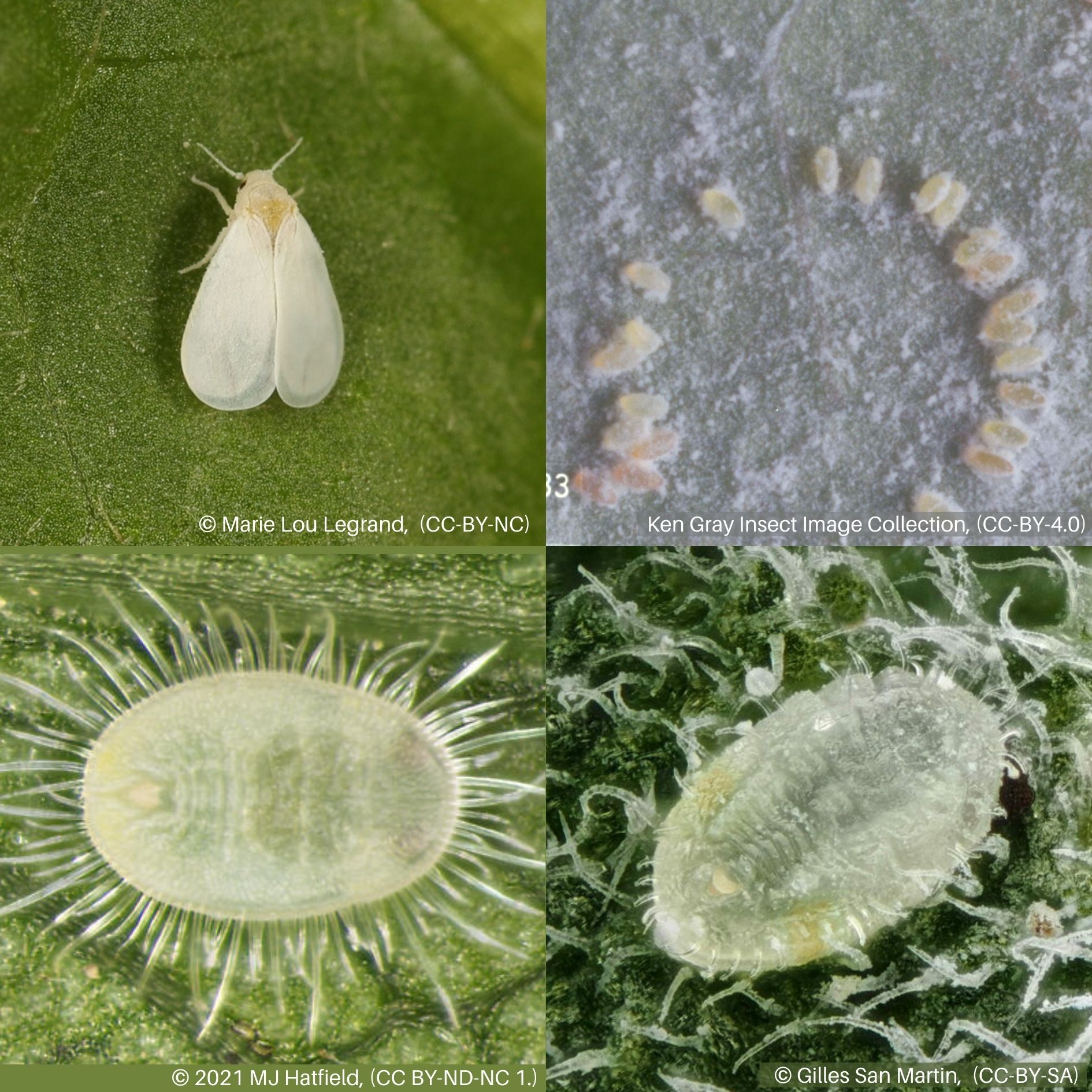Whiteflies
 Severe Whitefly Infestation with Penny for Size Comparison
Severe Whitefly Infestation with Penny for Size Comparison
 Leaf Discoloration Due to Whitefly Feeding
Leaf Discoloration Due to Whitefly Feeding A Lacewing Larva Hunts Whiteflies
A Lacewing Larva Hunts Whiteflies
HOSTS
- Greenhouse/High Tunnel Crops
- Artichoke
- Brassicas
- Cucurbits
- Hemp
- Leafy Greens
- Legumes
- Potato
- Root Crops
- Solanaceae Crops
DESCRIPTION
Adults are tiny with bright white wings and yellow-orange heads. Immature stages are inconspicuous with pale, almost translucent, flat bodies that are mostly immobile.
BIOLOGY
Egg | Larvae | Pupa | Adult- Several generations per year.
- Populations continue from year to year in greenhouses and in warm southern climates.
SYMPTOMS
Adults and nymphs feed with piercing-sucking mouthparts, causing leaves to turn yellow, appear dry, or fall off plants. Whiteflies, like aphids, also excrete a sugary substance called honeydew, causing shiny, sticky leaves or sooty mold growth on leaves.
SCOUTING
In the greenhouse, monitor with yellow sticky cards to detect whitefly presence. Look for large colonies during warm weather on the underside of lower leaves. Honeydew may also be noticeable on the tops of leaves. Before planting, inspect transplants for whiteflies.
GENERAL MANAGEMENT
- Attract and conserve natural enemies as they often provide adequate control.
- Inspect transplants and remove any with high whitefly populations.
- In greenhouses, use biocontrol (such as hanging cards with Encarsia sp.).
- Approved insecticides are available.
INSECTICIDES
Whiteflies develop resistance to insecticides quickly and treatment is not generally needed for garden plants in Utah. Greenhouse plants have a threshold of 10 nymphs/leaf.


